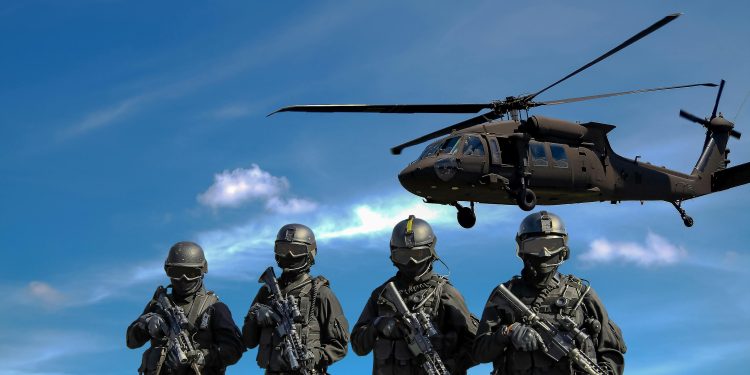No products in the cart.
$2.2 Trillion Defense Industry: India’s Global Rank and Career Surge
India’s 8.3% share in global arms imports signals a booming $2.2 trillion defense industry. Discover career paths in AI, cybersecurity, and manufacturing for 2025.
Global defense spending soared to $2.2 trillion in 2023, according to the Stockholm international Peace research Institute (SIPRI), a record high driven by conflicts in Ukraine, the Middle East, and Asia. India, with an 8.3% share of global arms imports from 2020 to 2024, ranks second worldwide, just behind Ukraine at 8.8%, per SIPRI’s latest data. This isn’t merely a statistic—it’s a signal of India’s growing clout in a $2.2 trillion industry, and a clarion call for Gen Z to seize career opportunities in defense tech, cybersecurity, and manufacturing. As India balances imports with a push for self-reliance, the sector is becoming a launchpad for the next generation.
India’s Global Position in Arms Imports
SIPRI’s 2020-2024 data reveals the top 10 arms-importing countries, with India securing the second spot. Ukraine leads with 8.8%, followed by India at 8.3%, Qatar and Saudi Arabia at 6.8% each, and Pakistan at 4.6%. Japan (3.9%), Australia (3.5%), Egypt (3.3%), the United States (3.1%), and Kuwait (2.9%) complete the list. India’s primary suppliers are Russia (36%), France (33%), and Israel (10%), with France providing Rafale jets and Israel supplying missile systems. The chart below visualizes the global landscape:
| Rank | Country | Share of Global Arms Imports (2020-2024) | Top 3 Supplier Countries |
|---|---|---|---|
| 1 | Ukraine | 8.8% | USA, Germany, Poland |
| 2 | India | 8.3% | Russia, France, Israel |
| 3 | Qatar | 6.8% | USA, Italy, UK |
| 4 | Saudi Arabia | 6.8% | USA, Spain, France |
| 5 | Pakistan | 4.6% | China, Netherlands, Türkiye |
| 6 | Japan | 3.9% | USA, UK, Germany |
| 7 | Australia | 3.5% | USA, Spain, Norway |
| 8 | Egypt | 3.3% | Germany, Italy, France |
| 9 | United States | 3.1% | UK, France, Israel |
| 10 | Kuwait | 2.9% | USA, Italy, France |
Source: Stockholm International Peace Research Institute (SIPRI)
 Cultural Heritage
Cultural HeritageThe Urgent Fight Against Language Extinction
Languages are vanishing at an alarming rate. Discover the causes, impacts, and innovative projects aimed at revitalizing these cultural treasures.
India’s 8.3% share reflects its strategic needs amid tensions with China and Pakistan, but it’s also diversifying suppliers. Russia’s share of India’s imports dropped from 76% in 2012-2016 to 36% in 2019-2023 due to the Ukraine conflict, while France’s share rose to 33%, per SIPRI’s 2024 report.
India’s 8.3% share reflects its strategic needs amid tensions with China and Pakistan, but it’s also diversifying suppliers.
India’s Defense Industry: A Growing Giant
India’s defense sector is a powerhouse, with a 2025-26 budget of $78.7 billion, up 9.5% from the previous year, according to Reuters. Of this, $21.7 billion is for capital outlay, though $56 billion goes to manpower costs, prompting concerns. “With a very marginal increase in the capital expenditure, the modernisation will not pick up pace,” warns Laxman Behera, a defense expert at Jawaharlal Nehru University, as quoted by Reuters in 2025. Domestic production reached $13 billion in 2022-23, up from $9 billion in 2016-17, with private companies contributing 21.96%, per NextIAS 2024 data. Defense exports hit $2.5 billion in 2023-24, a 25% increase year-over-year, making India a top 25 arms exporter, with key markets like Myanmar (31% of exports from 2000-2023) and Sri Lanka (19%), per SIPRI.
The sector’s production is projected to grow at a 20% CAGR from 2024 to 2029, potentially reaching $30 billion by 2029, according to CareEdge Ratings. India’s cumulative defense spending from 2024-2028 is forecasted at $445.7 billion, with $123.2 billion for acquisitions, per GlobalData 2023.
Government Support and Defense Startups
The Indian government’s Aatmanirbhar Bharat initiative is driving self-reliance, reserving 75% of the 2024-25 acquisition budget for domestic procurement, up from 58% in 2020-21, per the Stimson Center 2024. Over 500 defense items are now reserved for Indian manufacturing, and export procedures have been simplified. “The ‘Aatmanirbhar Bharat’ initiatives have helped the country by encouraging indigenous design, development and manufacture of defence equipment, thereby reducing dependency on imports in the long run,” states the Economic Survey 2023-24, as reported by the Economic Times in 2024.
 Art
ArtScope of Animation in India
CA News Desk Animation is often closely associated with comic books, with many characters from animated works appearing in comic…
Read More →The iDEX program has funded 150 startups since 2019, creating 10,000 jobs, with a 2024-25 budget of $48 million, though the DRDO’s Technology Development Fund received only $7.1 million, per the Stimson Center 2024. Startups like ideaForge and Tonbo Imaging are leading in drones and thermal imaging, supported by investments from firms like Infosys and Qualcomm.
Career Opportunities in India’s Defense Sector
India’s defense boom is creating high-demand roles. AI and cybersecurity analysts earn an average of $85,000 annually, with a 20% growth projected by 2028, per NASSCOM. Aerospace systems engineers average $90,000, and drone engineers earn $80,000, according to Glassdoor 2025 data. The India Skills Report 2024 notes rising employability in defense tech, with vocational training in AI, cybersecurity, and aerospace tech becoming key hiring criteria. Globally, the UAE and Saudi Arabia, each with 6.8% of global arms imports, offer roles paying over $100,000 for robotics and AI engineers, per industry reports.
The iDEX program has funded 150 startups since 2019, creating 10,000 jobs, with a 2024-25 budget of $48 million, though the DRDO’s Technology Development Fund received only $7.1 million, per the Stimson Center 2024.
Seizing the Opportunity
India’s 8.3% share of global arms imports and $2.5 billion in exports position it as a key player in the $2.2 trillion defense industry. For Gen Z, this means access to high-paying careers in AI, cybersecurity, and manufacturing, supported by government initiatives like Aatmanirbhar Bharat. Visit Career Ahead Online for skill guides and grab our latest mag for more on defense tech careers—your 2025 career awaits.











